Figure shows some equipotential lines distributed in space. A charged object is moved from point A to point B.
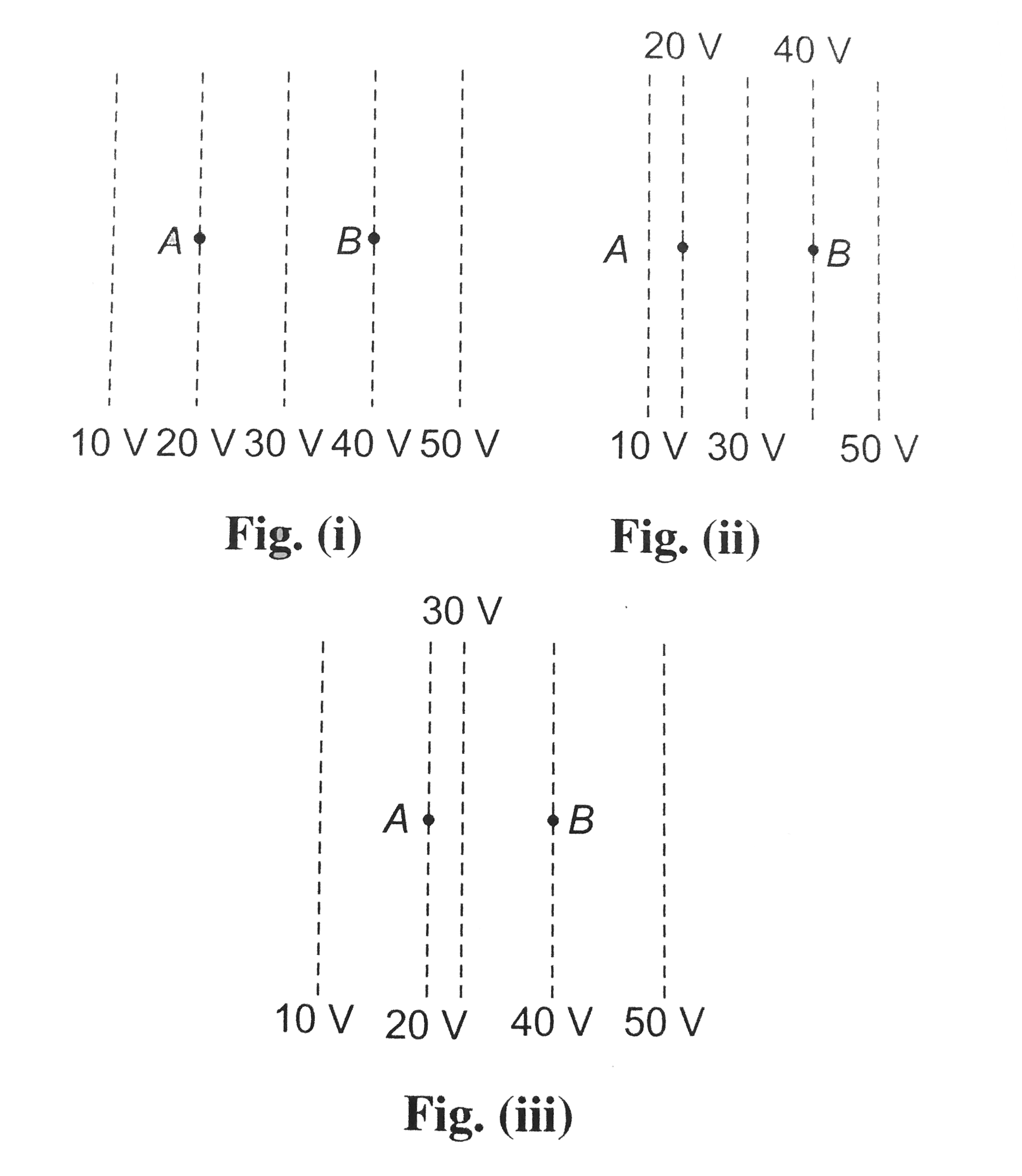
The work done in Fig. (i) is the greatest
The work done in Fig. (ii) is least
The work done is the same in Fig. (i), Fig. (ii) and Fig. (iii)
The work done in Fig. (iii) is greater than Fig. (ii) but equal to that in Fig. (i)
The correct Answer is:C
The work done by a electrostatic force is given by W12=q(V2−V1). Here initial and final potentials are same in all three case ans same charge is moved, so work done is same in all three cases.
Topper's Solved these Questions
- BOOK - A2ZCHAPTER - ELECTRIC POTENTIAL & CAPACITANCEEXERCISE - Capacitor32videos
ELECTRIC POTENTIAL & CAPACITANCE
- BOOK - A2ZCHAPTER - ELECTRIC POTENTIAL & CAPACITANCEEXERCISE - Capacitor With Dielectric32videos
ELECTRIC POTENTIAL & CAPACITANCE
- BOOK - A2ZCHAPTER - ELECTRIC POTENTIAL & CAPACITANCEEXERCISE - Electric Potential Energy22videos
ELECTRIC POTENTIAL & CAPACITANCE
- BOOK - A2ZCHAPTER - ELECTRIC CHARGE, FIELD & FLUXEXERCISE - Section D - Chapter End Test29videos
ELECTRIC CHARGE, FIELD & FLUX
- BOOK - A2ZCHAPTER - ELECTROMAGNETIC INDUCTIONEXERCISE - Section D - Chapter End Test30videos
ELECTROMAGNETIC INDUCTION
Similar Questions
Figure (a) and (b) show the field lines of a positive and negative point charge respectively.
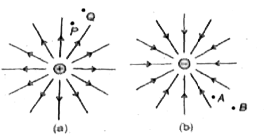
(a) Give the signs of the potential difference . Vp−VQ,VB−VA
(b) Give the sign of the potential energy difference if a small negative charge is moved from points Q to P from point A to B.
(c) Give the sign of the work done by the field in moving a small positive charge from Q to P.
( d) Give the sign of the work done by the external agency in moving a samall negative charge from B to A .
(e ) Does the kinetic energy of a small negative charge increase or decrease in going from B to A ?View SolutionDraw the equipotential surfaces due to an isolated point charge.
View Solution
Knowledge Check
- Question 1 - Select One
Figure shows some equipotential lines distributed in space. A charged object is moved from point A to point B.
 AThe work done in Fig. (i) is the greatestBThe work done in Fig. (ii) is leastCThe work done is the same in Fig. (i), Fig. (ii) and Fig. (iii)DThe work done in Fig. (iii) is greater than Fig. (ii) but equal to that in Fig. (i)
AThe work done in Fig. (i) is the greatestBThe work done in Fig. (ii) is leastCThe work done is the same in Fig. (i), Fig. (ii) and Fig. (iii)DThe work done in Fig. (iii) is greater than Fig. (ii) but equal to that in Fig. (i) - Question 2 - Select One
Same equipotential lines distributed in space are shown below. A charged object moves from A to B:
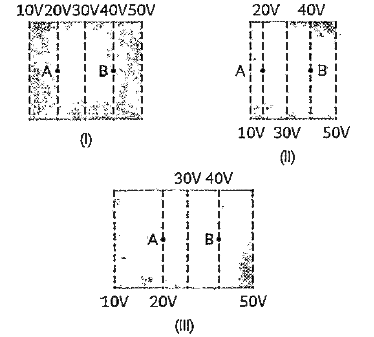 AWork done is same in fig (I), (II) and (III)BWork done is greatest in fig (I)CWork done is least in fig (II)DWork done in fig (III) is greater then fig (II) but equal to that in fig (I)
AWork done is same in fig (I), (II) and (III)BWork done is greatest in fig (I)CWork done is least in fig (II)DWork done in fig (III) is greater then fig (II) but equal to that in fig (I) - Question 3 - Select One
Same equipotential lines distributed in space are shown below. A charged object moves from A to B
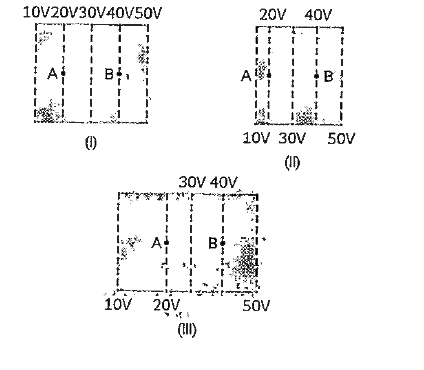 AWork done is same in fig (I), (II) nad (III)BWork done is greatest in fig (I)CWork done is least in fig (II)DWork done in fig (III) is greater then fig (II) but equal to that in fig (I)
AWork done is same in fig (I), (II) nad (III)BWork done is greatest in fig (I)CWork done is least in fig (II)DWork done in fig (III) is greater then fig (II) but equal to that in fig (I)
Figure shows a set of equipotential surfaces. There are a few points marked on them. An electron is being moved from one point to other. Which of the following statements is/are correct?
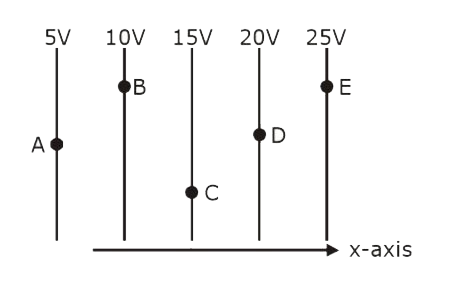 View Solution
View SolutionThe diagram below show region of equipotentials.
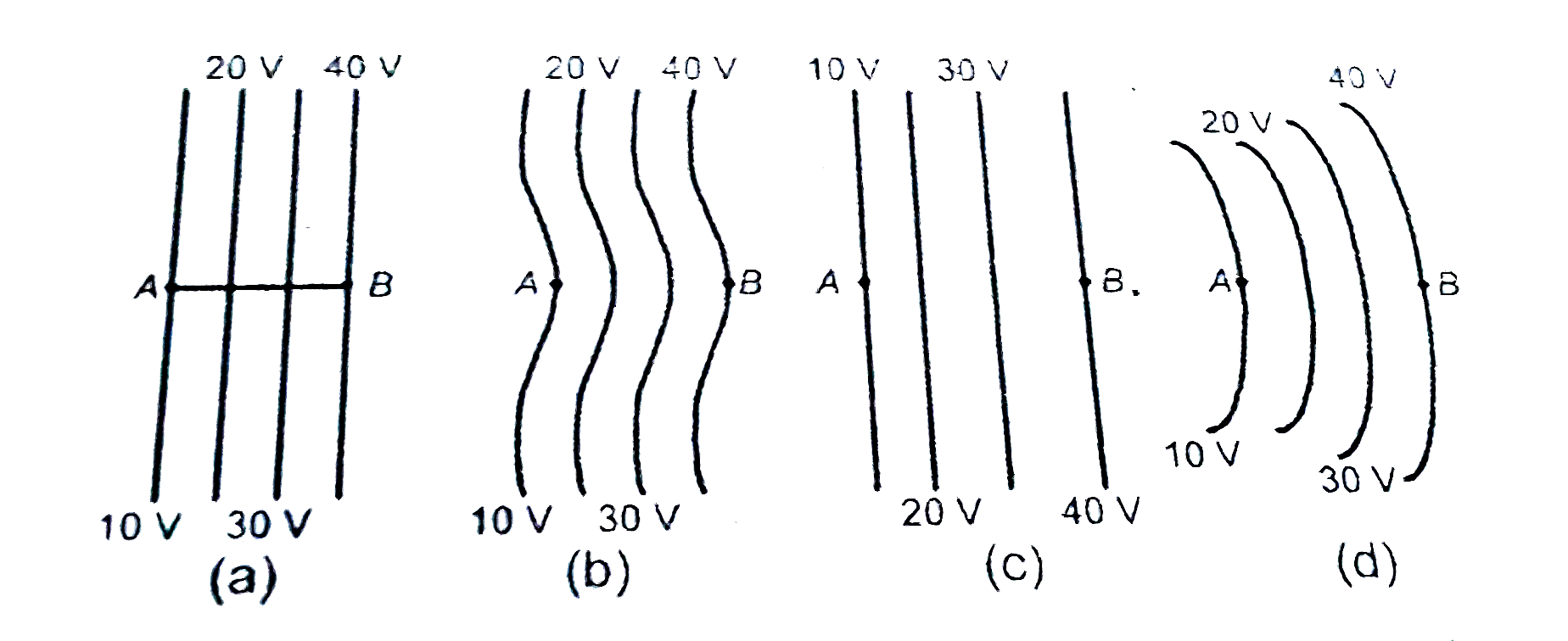
A positive charge is moved from A to B in each diagram .View SolutionFigure shows sone equipotential surfaces produce by some charges. At which point, the value of electric field is greatest ?
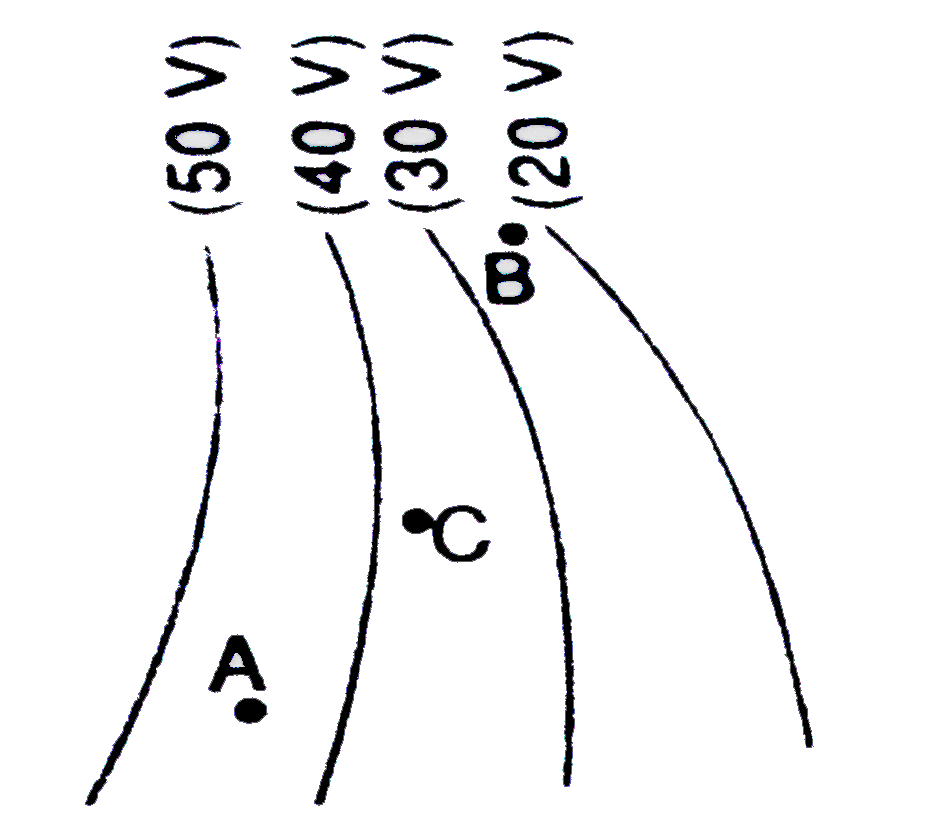 View Solution
View SolutionThe diagram below show region of equipotentials.

A positive charge is moved from A to B in each diagram .View SolutionThe diagram below show regions of equipotentials.
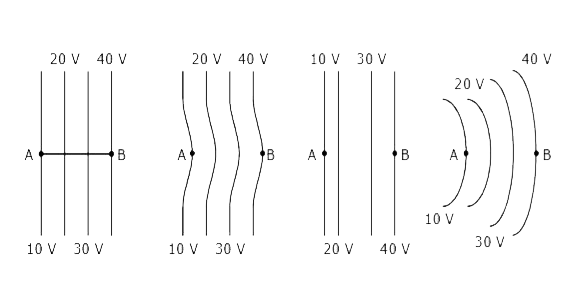
A positive charge is moved from A to B in each diagram.View Solution

